In early spring of this year, we embarked on a three-week trip across South America with a 10-hour flight from Los Angeles to Santiago, Chile. We flew via LATAM Airlines (a merger between Chile’s former national carrier, LAT, and Brazil’s TAM Linhas Aereas in 2012) — the time was mostly spent trying our best to get some decent sleep.
We arrived tired early morning in Santiago primarily because of the plus (+) three (3) hour time difference. Carlos, our shuttle driver (from the reliable airportstaxitransfers service), was punctual. As soon as we emerged from the arrival gate, he whisked us to the Arturo Merino Benitez International Airport‘s parking garage in no time.
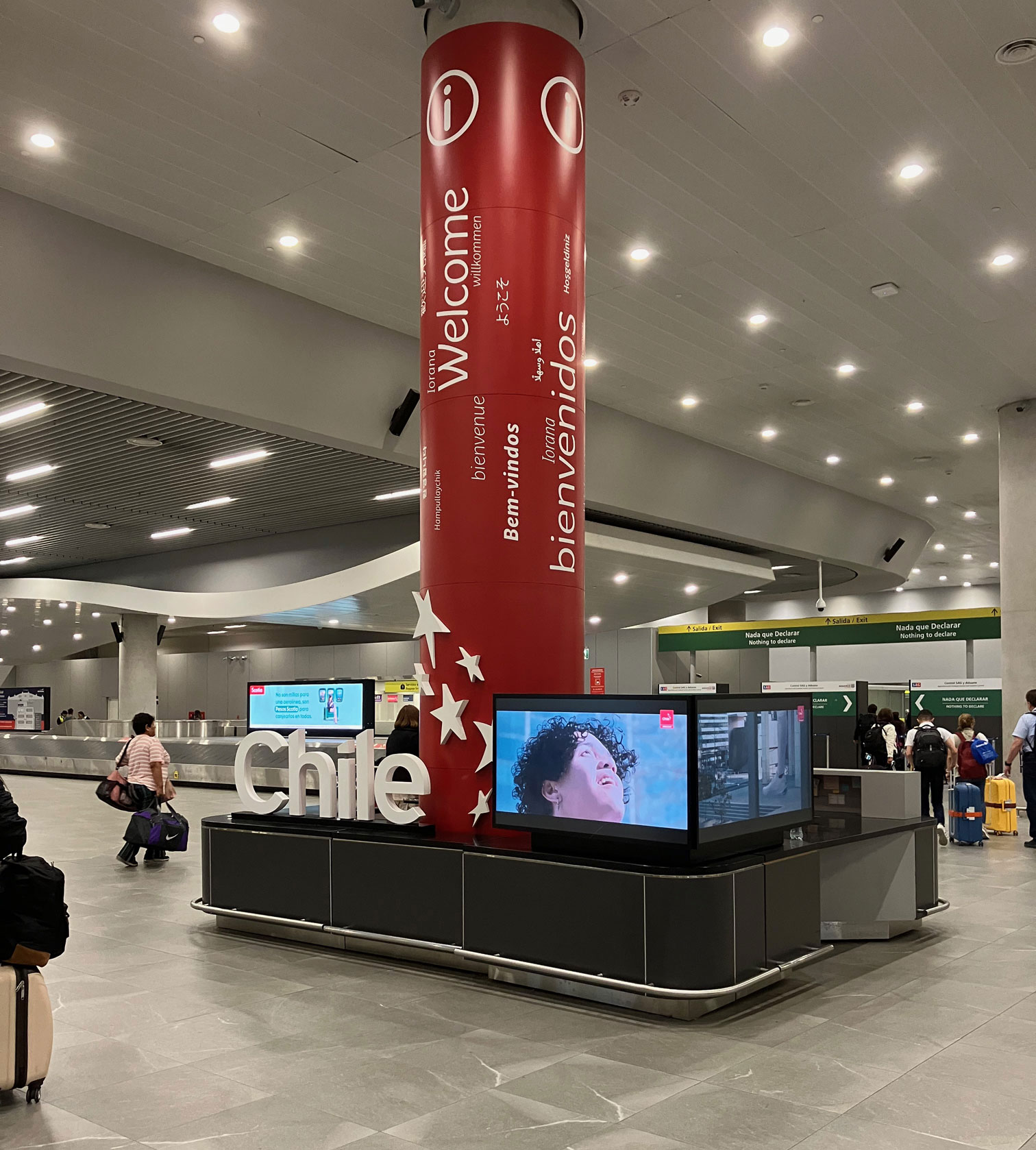
The trip aboard a Mercedes Benz Sprinter van toward the Condes district in Santiago, where our hotel was situated, was quiet and uneventful. It was a Saturday in Chile, and most of the shops we saw along the way were still closed, but there were ‘early risers’ who either jogged or took their dogs for a walk.
When we got inside the elegant multi-story condo building just before 8 AM, an elderly man who barely spoke English greeted us. I sidled to one side of the counter and informed him I could understand and speak some Spanish. He showed me the guest book and explained, in halting Spanish, that our studio unit wouldn’t be available until 3 PM.
To our delight, a few minutes later, an amiable señora who spoke fluent English took over the reception desk and explained that we could use the 2nd-floor lounge area where the guest toilets are also located. She also took all our luggage for safekeeping and ensured that they were all accounted for in case we decided to go out while waiting for our unit to become available.
Across the street, next to a Pizza Hut, Don (my brother-in-law) and Ruby managed to get some beef “empanadas” (turnovers) and cups of coffee using the Chilean pesos Don and Ellen ( Don’s spouse and also my older sister) had exchanged through their bank in the US just a few days before our trip. Using Chilean pesos exclusively won’t be an issue since almost all shops in Chile would gladly take credit cards in exchange for a small convenience fee.
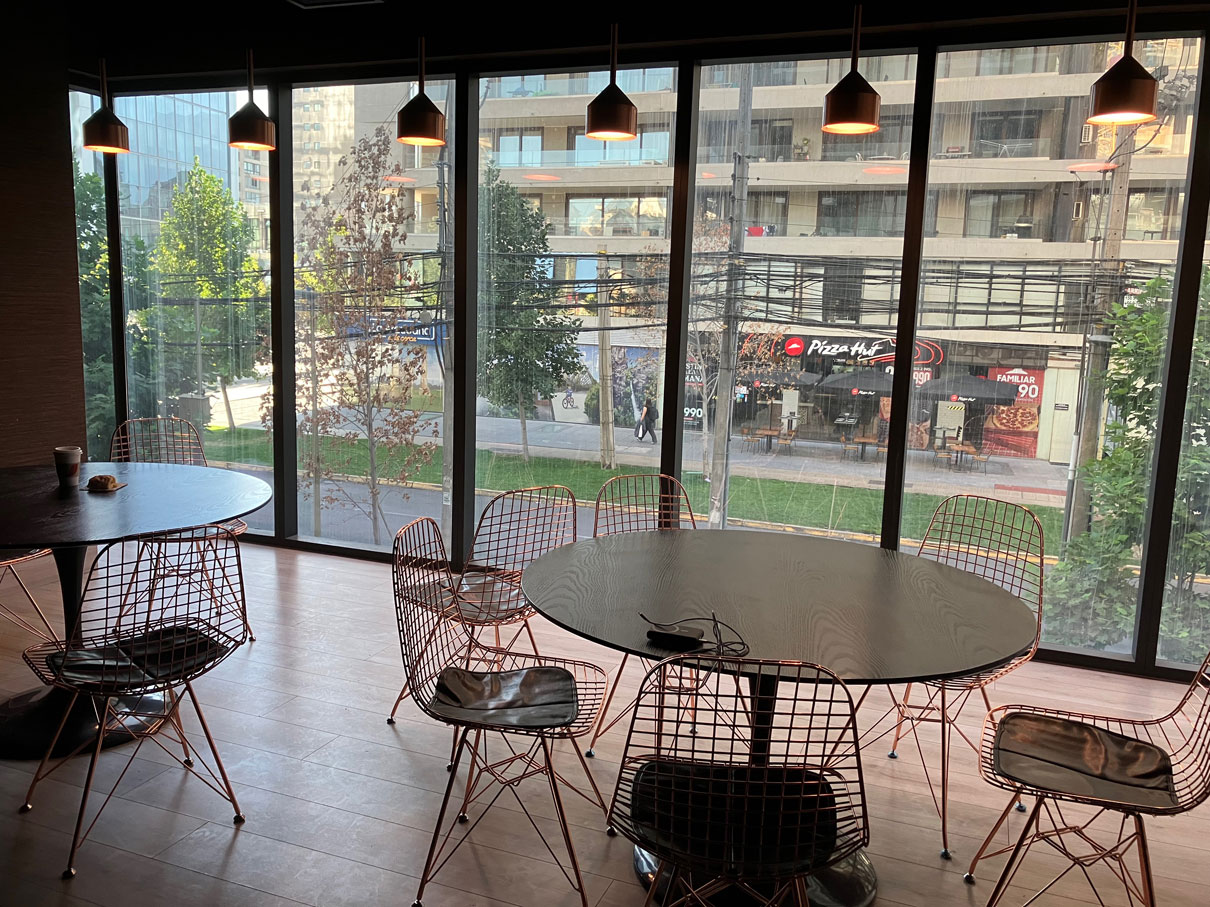
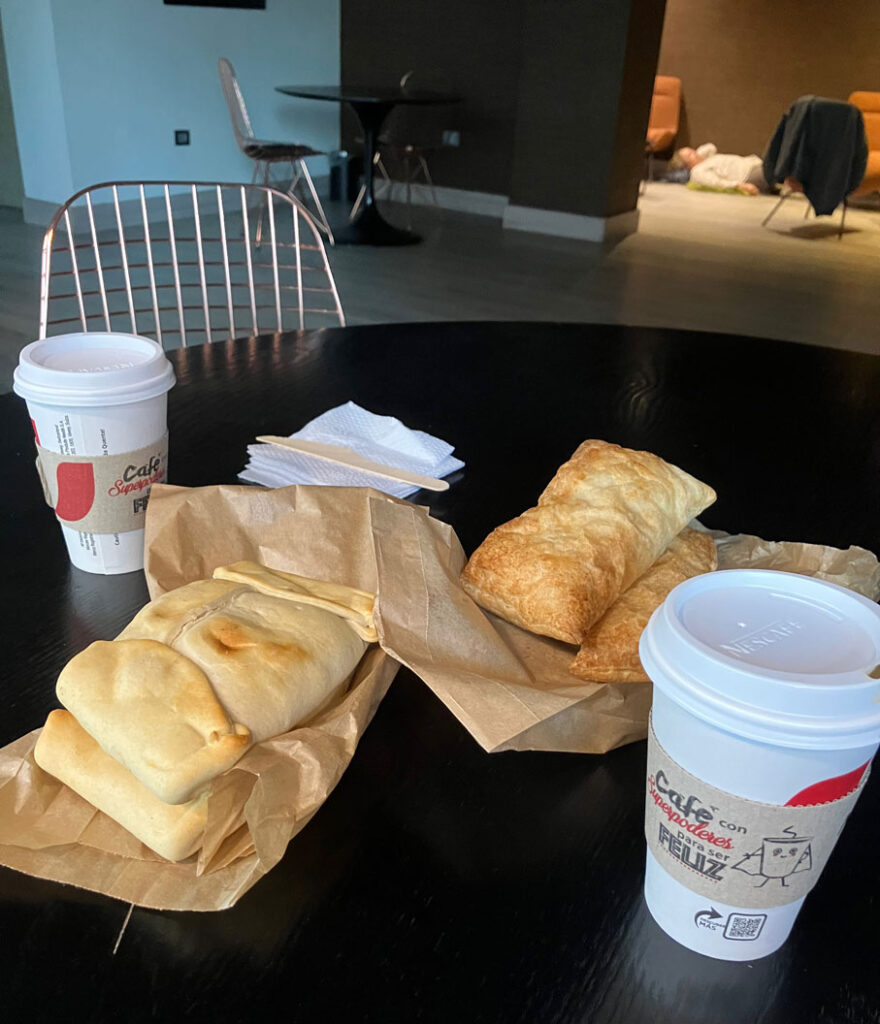
While the rest of the group tried to sleep after a few bites of their empanadas and sips of the morning brew, I busied myself figuring out how to get the ride-hailing app, Cabify (popular in Spain and other Latin American countries), working on my phone. The Chileño (a native of Chile) who sat next to us on the plane from LAX informed us that it (Cabify) was the safest and best way to get around Chile, other than Uber. He also gave us tips on nearby places we could visit during our short stay in Santiago.
A day before our trip, I had pre-loaded my phone with an eSIM for the entire South American continent. I received a good data signal in Chile via Movistar (another Spain-based telecoms provider). Some eSIMS, however, don’t provide you with a phone number, which is a requirement these days when trying to confirm your identity if activating an app that requires a mode of payment.
It was about 10 AM, and I asked Giorka (the amiable señora) which direction most shops are located around the area. She told me to turn right at the corner of La Capitania and Avenida Apoquindo, and I should see a few shops selling mobile phones and accessories.
I was tempted to walk into a few restaurants and grocery stores along the way, but I did get a 30-day physical SIM card with a Chilean # tied to it for just Chilean Peso 10.
We agreed to go to downtown Santiago as we still had a few hours to wait before our unit became available. After checking that the Cabify app worked, we took our first private ride (aboard a Suzuki Swift) in South America towards Avenida Andres Bello, ending at a nearby mall that houses a 62-story building called the Gran Torre Costanera.
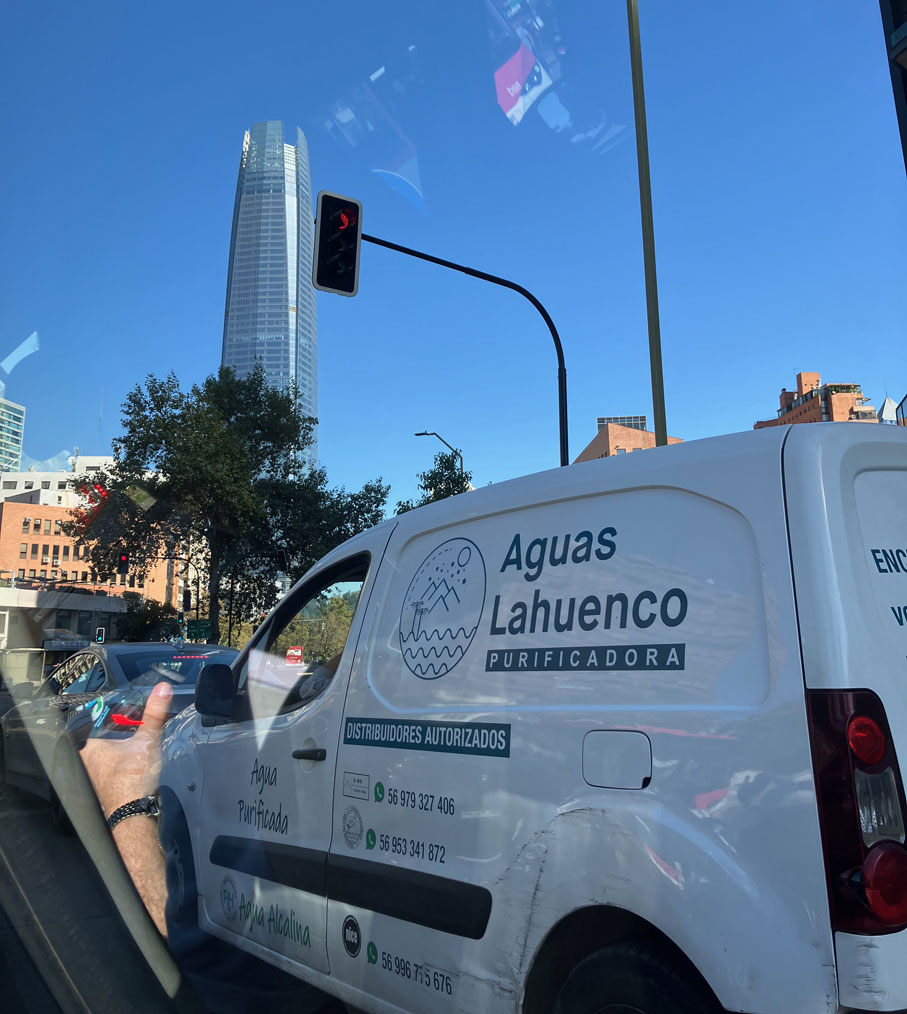
The elevator ride to the 61st floor, which takes us to “Sky Costanera,” is located on the 4th level of the mall and is conspicuously hidden by the maze of shops inside. The entrance fee for foreigners is about US$18, but considerably lower for all Chilean residents. Personal belongings go through a scanner, but bottled water is allowed.
A high-speed elevator whisked us up the tower, but not after a brief do’s and don’ts and what to expect on top—both in Spanish and English, as the case may be.
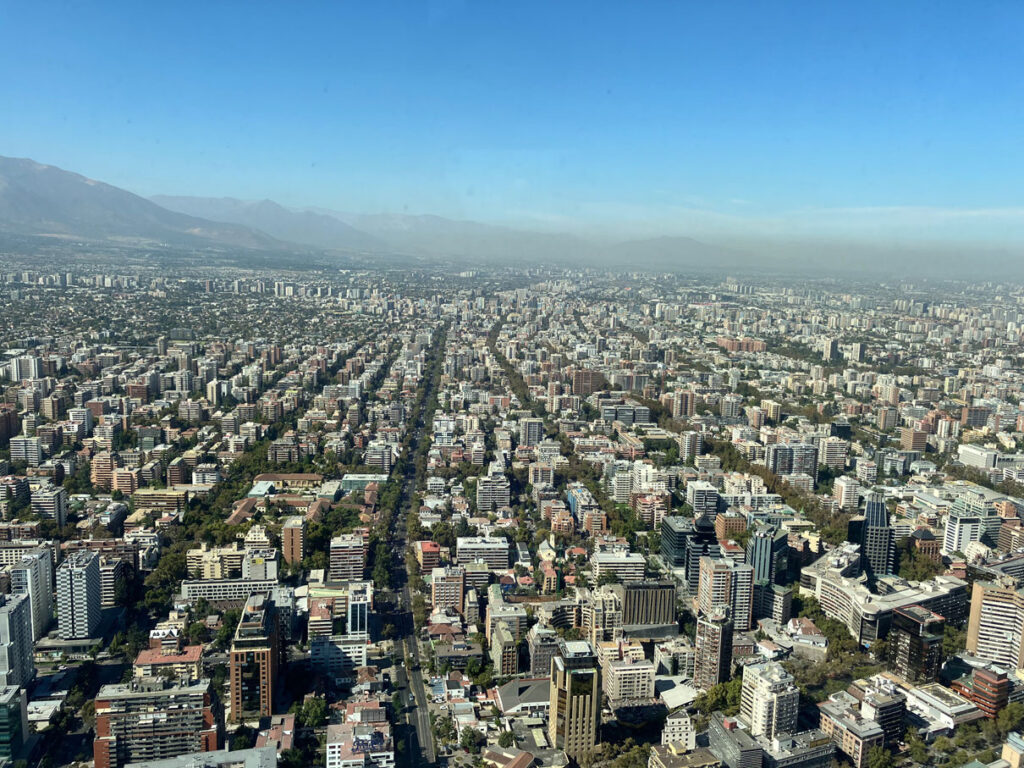
The view from the tower is fascinatingly spectacular. The Andes Mountain range can be seen from a distance. The tower also has a restaurant and an open view on the topmost floor.
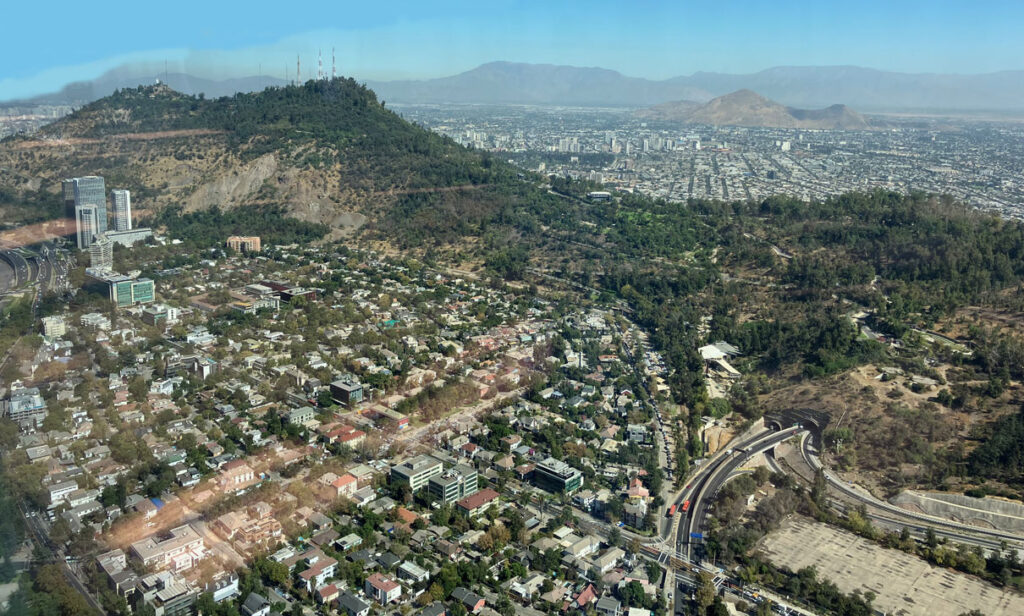
We spent more than an hour on the topmost floors enjoying the panoramic views until we asked around about the white statue on the hill, where several telecommunication antennas are conspicuous.
After a late lunch (including a few bottles of the best Chilean beers) at a row of several restaurants just a block away from the mall, we hailed our short Cabify ride to the Estación Pio Nono Funicular.
As expected, a tram (funicular) ride will take us up Cerro San Cristóbal, the third-highest hill in the city (after Cerro Manquehue and Cerro Renca), where the statue of the Blessed Virgin Mary sits atop its peak.
When we purchase our ride tickets at the medieval-looking visitors center, guests can take the same funicular ride up and down the hill— the cheaper option —or opt for the teleferico (cable car) ride going down.
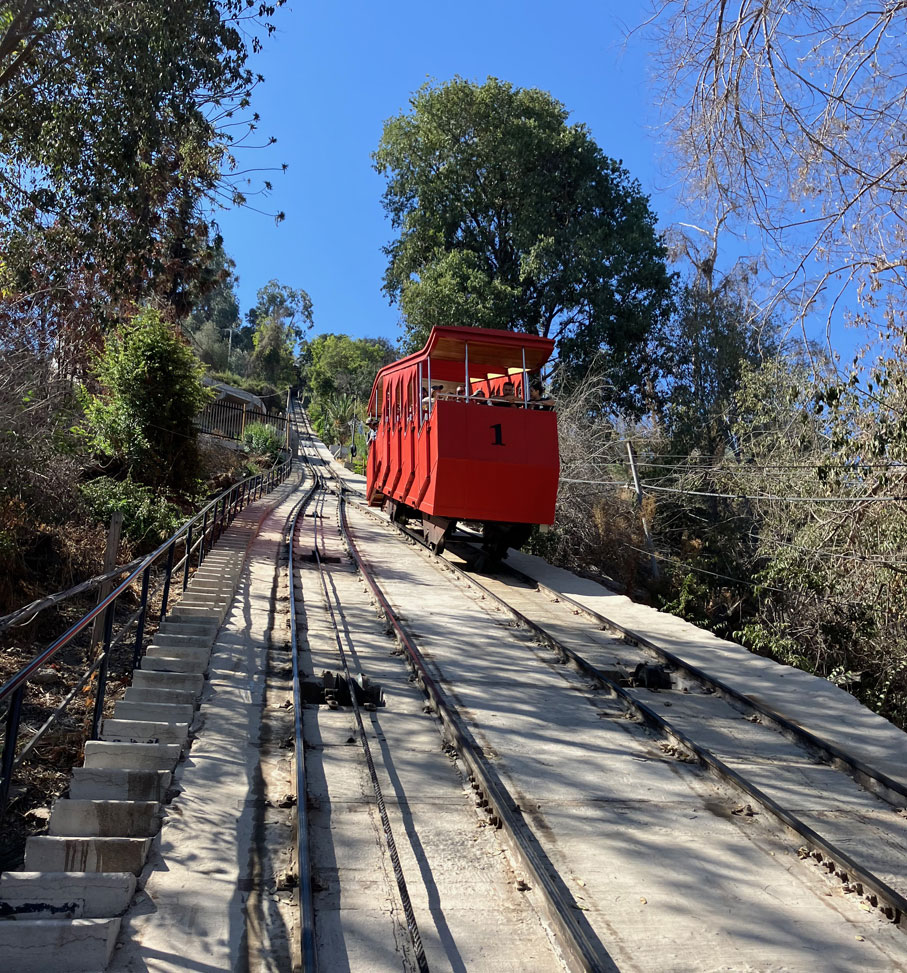
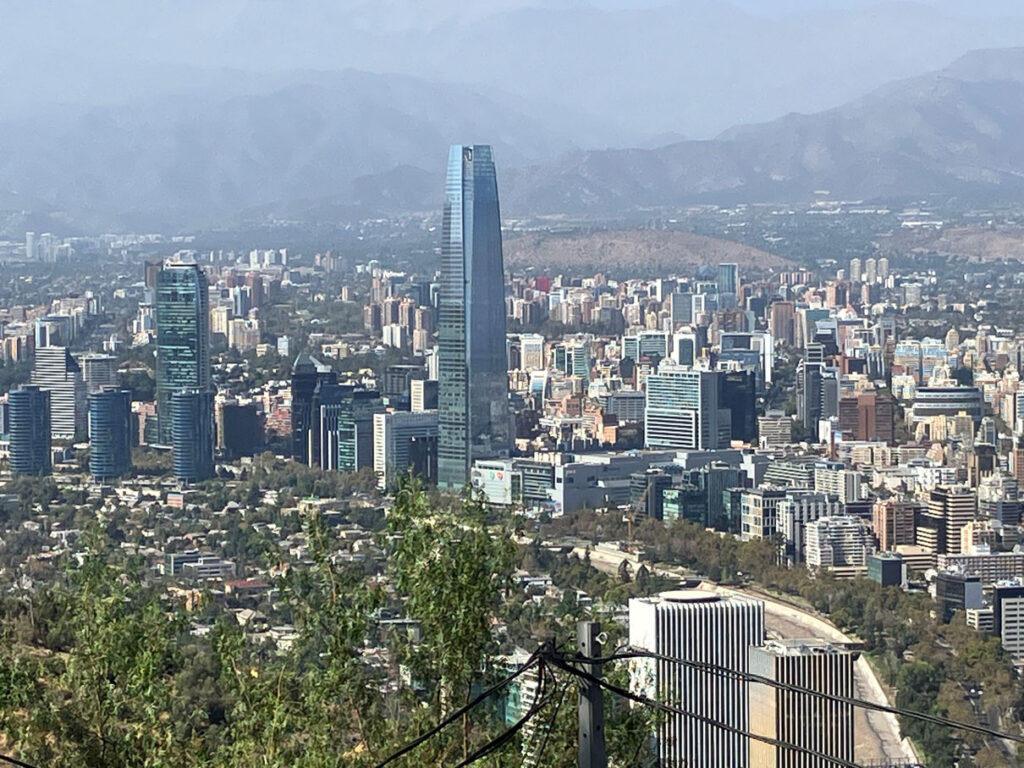
…to be continued.

